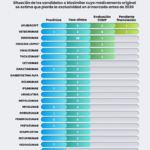La European Commission, in the document on biosimilar medicines published in 2013 defines “exchange” as the medical practice that consists of changing a medication for another that is expected to obtain the same clinical effect in a certain clinical picture and in any patient at the initiative —or with the consent— of the prescribing physician. The exchange is therefore a clinical act that must be instigated by the prescribing doctor, or authorized by him, and that not to be confused with "substitution".
The change (Switch in English) from one biological treatment to another from which an equivalent effect is expected, has been and is a frequent practice among original products. It is usually done before the appearance of adverse effects, or before a decrease in efficacy, but it can also be motivated by experimental reasons, by the appearance on the market of another innovative product, or by other causes. Examples of this are the massive switch from human insulin to insulin analogues, from follicle-stimulating hormone (FSH) to the recombinant version (follitropin), from filgrastim to Peg-filgrastim, or the sequential administration of original drugs equivalent to the same patient (beta interferon from two different laboratories, follitropin alfa and follitropin beta, etc…).
The original medicines mentioned exchanged have not been developed with the objective of being comparable and therefore they do not reach the degree of similarity that is required between the biosimilar and its corresponding reference product. However, the evidence so far does not allow us to affirm that particular adverse effects are derived from the act of exchanging two original products in a patient (for example immunogenicity). Probably this statement should be supported by systematic studies on the matter.
The experience of therapeutic interchange between originator drugs It takes into account both products with different active principles but the same mechanism of action, as well as drugs whose active principle is so molecularly similar that their international common name only varies in some suffix or prefix. This experience allows us to affirm that the interchange between the biosimilar and the original product is unlikely to induce a significant risk for the patient.
Likewise, as expected as a result of the demanding exercise of comparability between the biosimilar and the reference product, preliminary clinical studies and the accumulated experience with biosimilars show that the reciprocal exchange between the original and the biosimilar in a given patient should not entail a significant added risk. What's more, such is the degree of equivalence between the biosimilar and the original, that if a certain patient does not react to the original biological treatment as expected, the change to the biosimilar would not be justified.
Therefore, based on the experience in the exchange between biologics and the studies with the biosimilar, we can say that the reciprocal exchange between the biosimilar and its original reference should not be associated with significant clinical risk. In any case, it is the prescribing doctor who must decide, or support the decision, to exchange.




